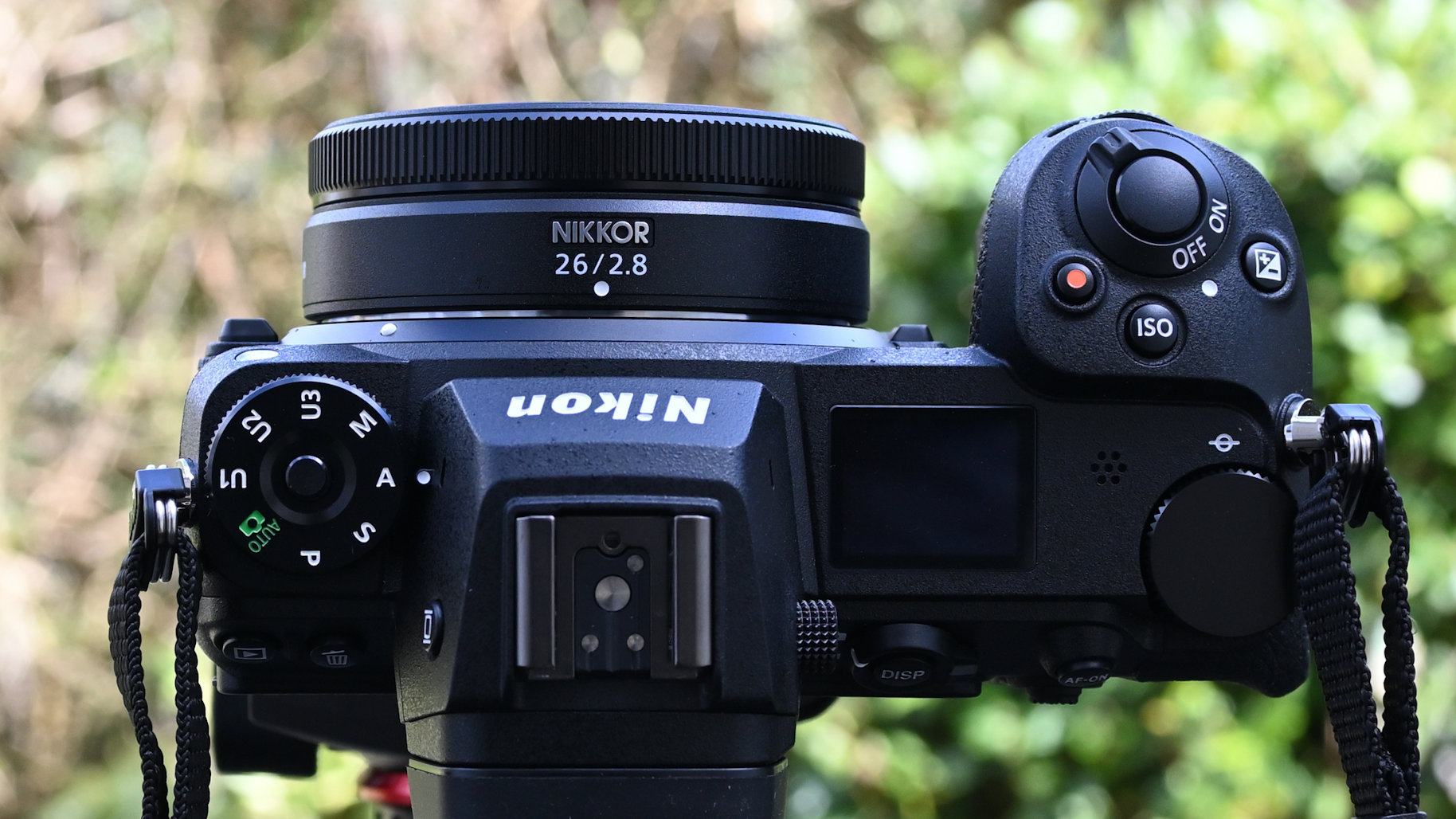
The Nikon Z 26mm f/2.8 is so small and lightweight that when you take delivery, you might feel you’ve been handed an empty box. Nikon’s skinniest Z system lens to date, it follows in the diminutive steps of the Z 28mm f/2.8 and Z 40mm f/2, both of which are available in standard and SE (Special Edition) flavors. Those two lenses aren’t massively bigger or heavier, at 70x43mm, 160g, and 70x46mm, 170g respectively.
Another lightweight is the 135g Z DX 16-50mm F/3.5-6.3 VR which is a mere 70-32mm in size, although that’s mostly due to its retractable design, and the lens extends to as much as 60mm in length when in use. Ultimately, if you’re in the market for the smallest and most lightweight lens in Nikon’s Z line-up, and one that’s ideal for candid street photography and taking on your travels, you’ve come to the right place.
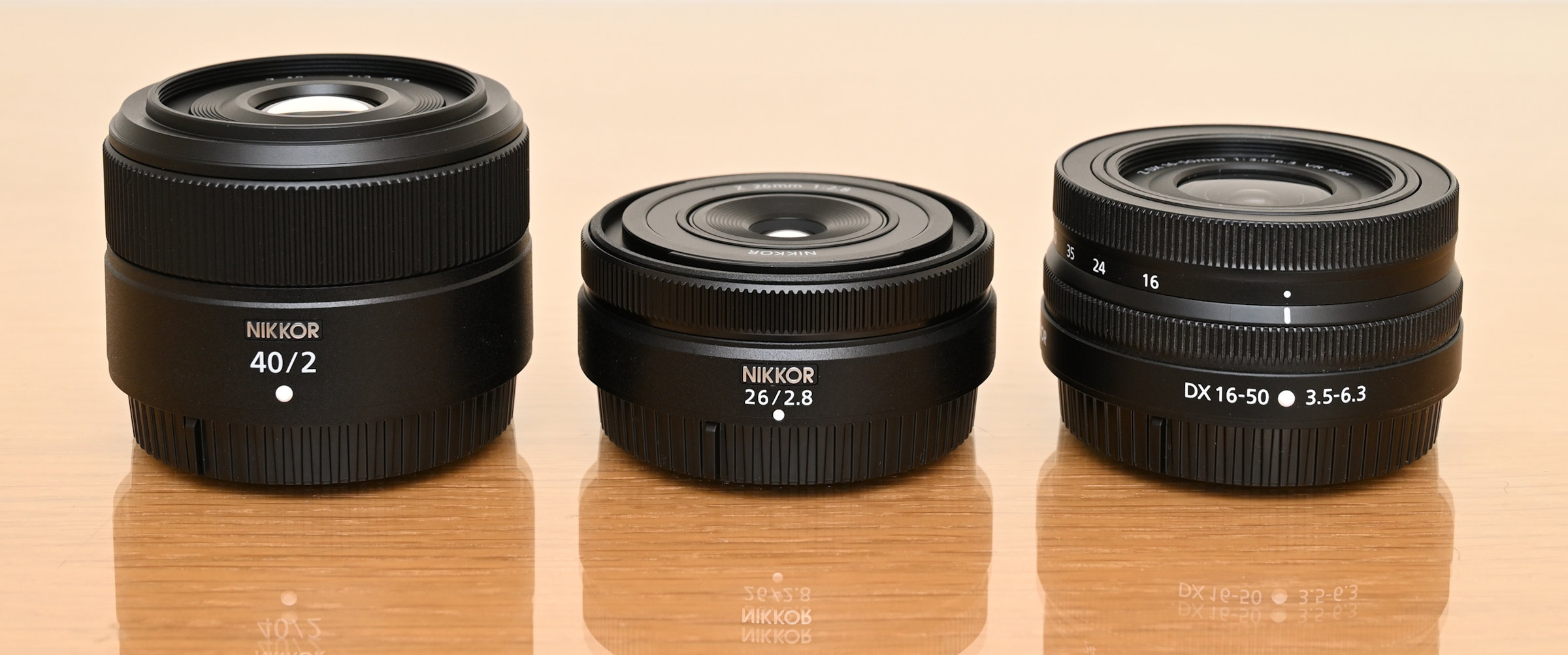
Specifications
Mount: Nikon Z
Full-frame: Yes
Autofocus: Yes
Stabilization: No
Lens construction: 8 elements in 6 groups
Angle of view: 79 degrees (FX), 57 degrees (DX)
Diaphragm blades: 7
Minimum aperture: f/16
Minimum focusing distance: 0.2m
Maximum magnification ratio: 0.19x
Filter size: 52mm
Dimensions: 70x23.5mm
Weight: 125g
Key features
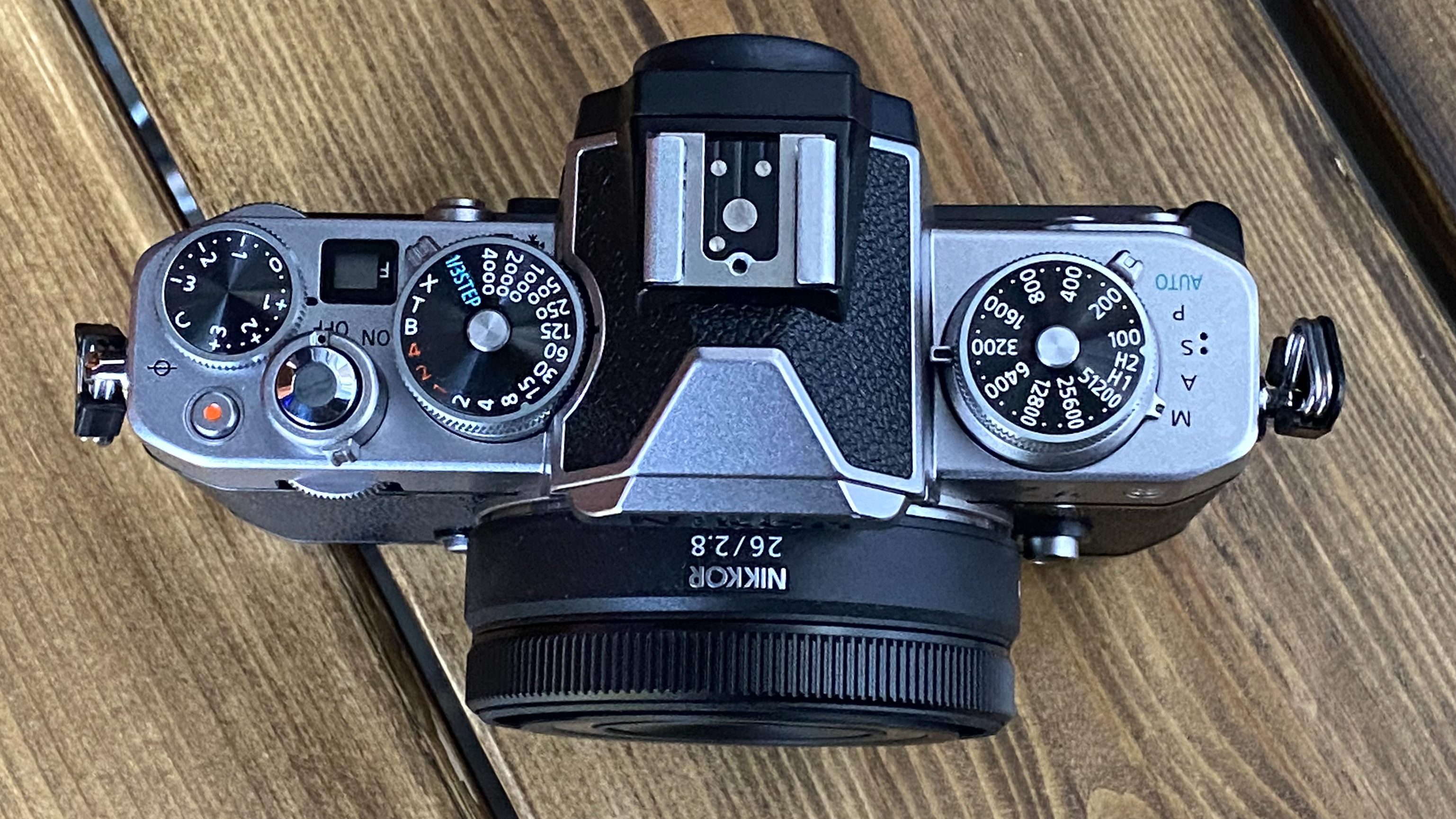
There’s really very little room to shoehorn many features into this pancake lens. Despite only having eight optical elements in total, three of them are aspherical, which helps to reduce the size and weight of the overall package. Further downsizing is thanks to the lens being supplied with a slip-on front cap rather than Nikon’s usual chunkier type that clips into the filter thread. That’s actually out of necessity, as we’ll come to next.
A bayonet-fit HB-111 hood is supplied with the lens, and is similarly slim-line despite featuring a 52mm filter attachment thread. Indeed, there’s no filter thread on the lens itself, so you can only fit filters when the hood is mounted on the lens.
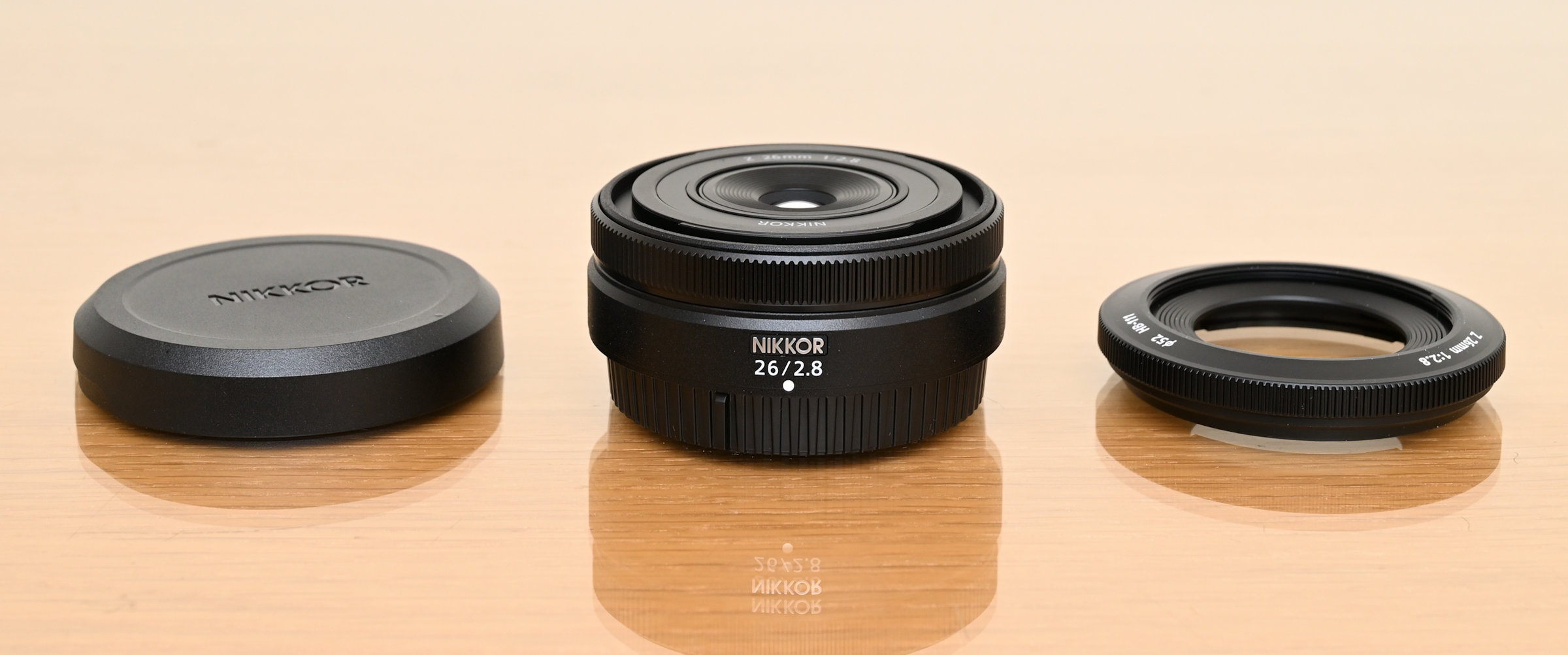
A typical feature of Z system lenses is that you can customize the action of the manual focus ring, giving direct access to the likes of aperture control, ISO, and exposure compensation when in autofocus mode. Autofocus itself is driven by a stepping motor, the performance of which we’ll come to later but for now, let’s just say that it has the usual electronic coupling to the control ring for manual focusing.
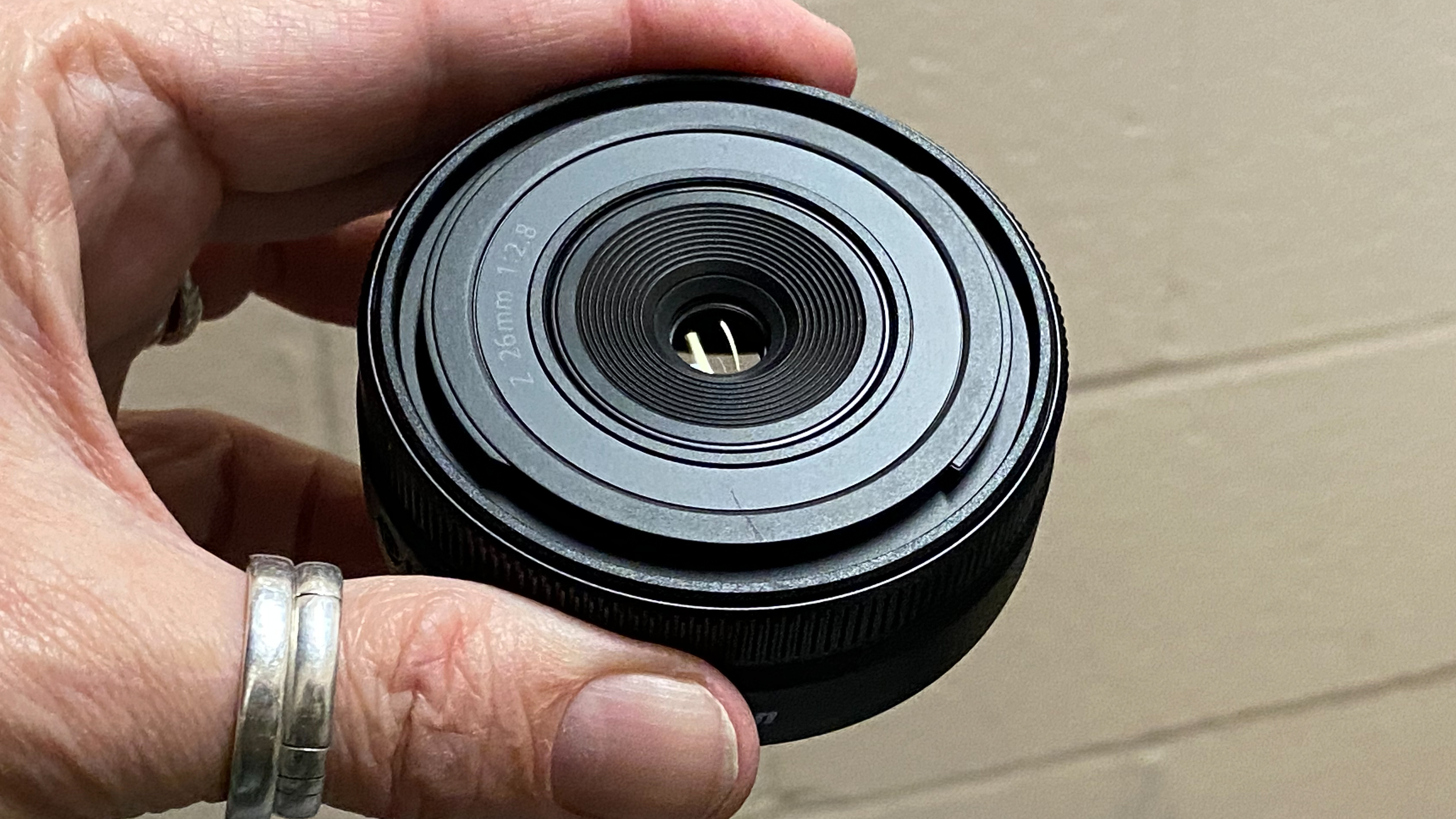
Build and handling
Build quality feels reassuringly solid, despite the lightweight construction. Unlike the compact Z 28mm, Z 40mm, and Z DX 16-50mm lenses, this one has a metal rather than a plastic mounting plate, which should prove more durable. There’s also a good sprinkling of weather seals to keep moisture and dust at bay.
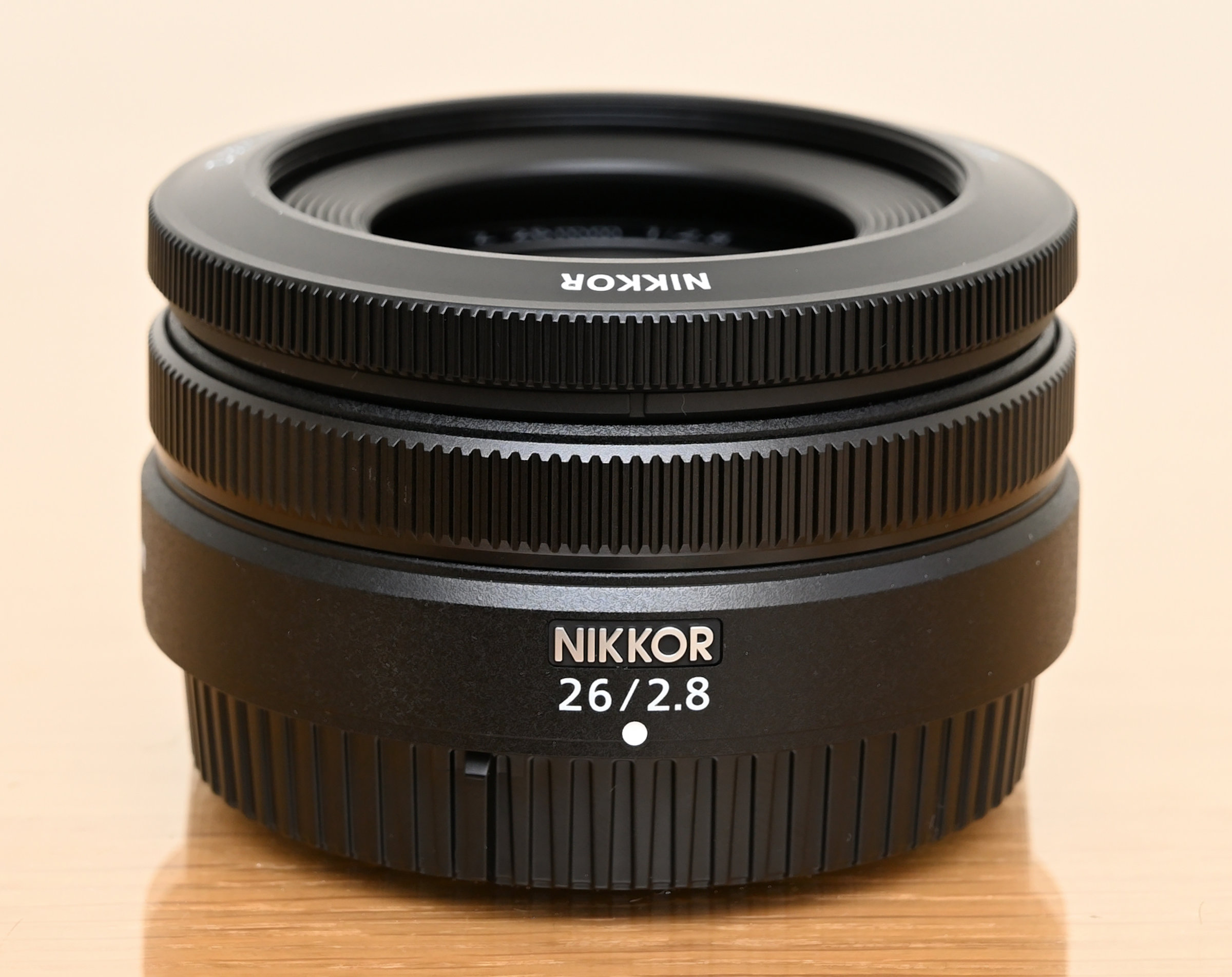
When lens designers are trying to squeeze a quart into a pint pot, as it were, something has to give. In this case, it’s the lens’s inner barrel. At the infinity focus point, the inner barrel is flush with the front surface of the lens but it gradually extends as you sweep through to the shortest focus distance of 0.2m. It then becomes obvious why there’s no filter thread on the lens itself, and filters can only be fitted via the hood, which gives a bit more breathing space.
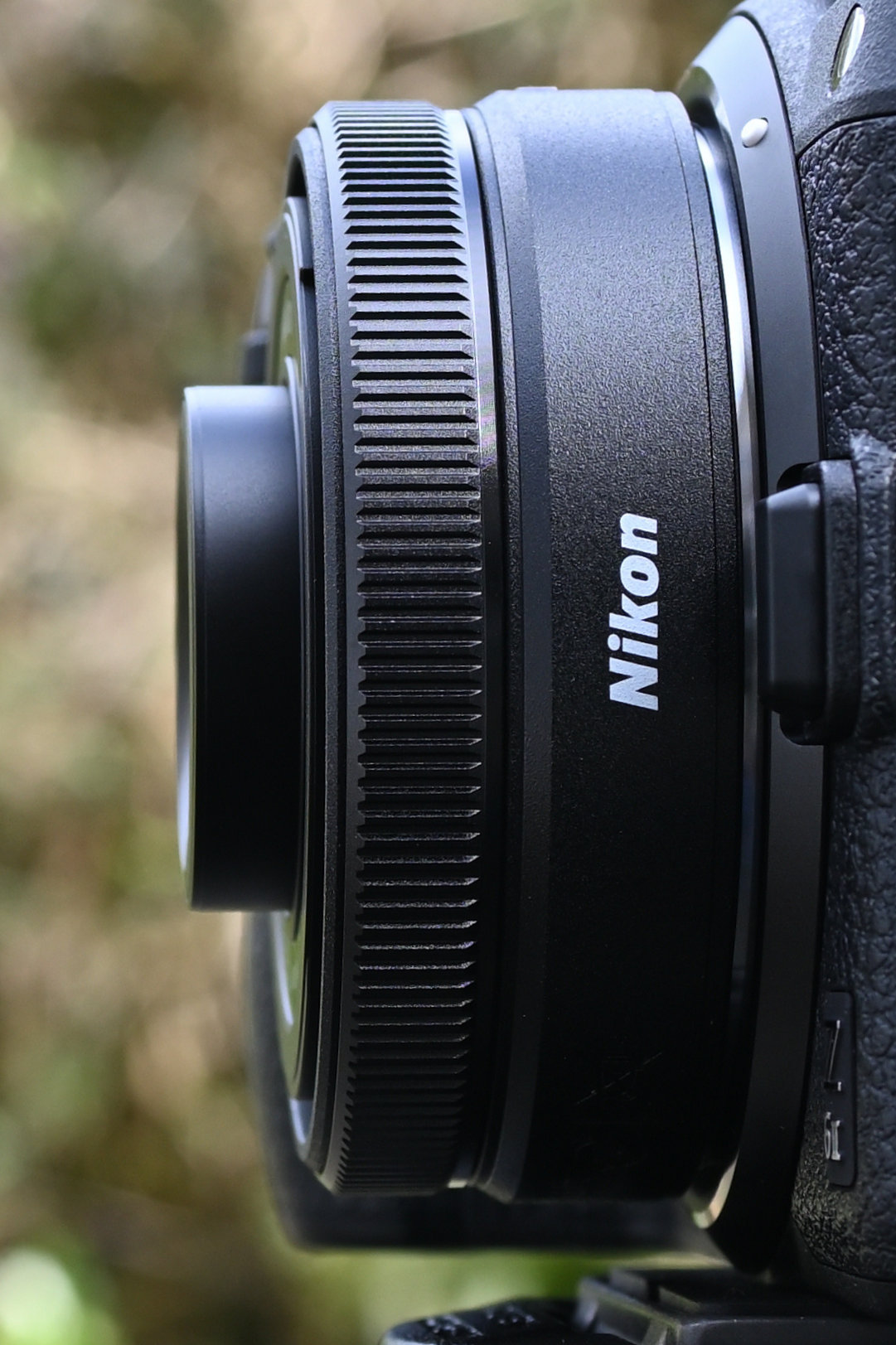
Performance
We’ve seen many lenses from Nikon and competing manufacturers with stepping motor-based autofocus systems, where autofocus snaps into place with spectacular speed, and in almost total silence. The Z 26mm isn’t one of them. Autofocus speed is comparatively pedestrian and clearly audible in operation. Even so, you only really notice it when making big focus transitions between very close and distant subject matter. A plus point is that smooth autofocus transitions are available during movie capture, unlike with ring-type ultrasonic systems. A further bonus is that the lens doesn’t suffer from noticeable focus breathing.
Levels of sharpness are very impressive for such a little lens with a frankly tiny front element. It’s very good across the whole image frame, only dropping off a little at the extreme edges when shooting wide-open at f/2.8. Sharpness also remains very good at the narrowest aperture of f/16, keeping diffraction at bay. Color fringing is entirely negligible.
The compact size of the lens comes at the expense of a couple of compromises in terms of image quality ‘straight out of the box’. As with many recent lenses for mirrorless cameras, the Z 26mm relies heavily on automatic in-camera correction for distortion, which can’t be switched off in the shooting menu. There’s also heavy vignetting at f/2.8, which is still quite apparent even with in-camera correction switched to its ‘normal’ setting – at least you get the choice this time around, which is good as vignetting can add character in some compositions.
Naturally, nothing is ever perfect but the Z 26mm strikes a very good balance between all-round performance and an extremely compact, lightweight build.
Sample images









Lab results
We run a range of lab tests under controlled conditions, using the Imatest Master testing suite. Photos of test charts are taken across the range of apertures and zooms (where available), then analyzed for sharpness, distortion and chromatic aberrations.
We use Imatest SFR (spatial frequency response) charts and analysis software to plot lens resolution at the center of the image frame, corners and mid-point distances, across the range of aperture settings and, with zoom lenses, at four different focal lengths. The tests also measure distortion and color fringing (chromatic aberration).
Sharpness:
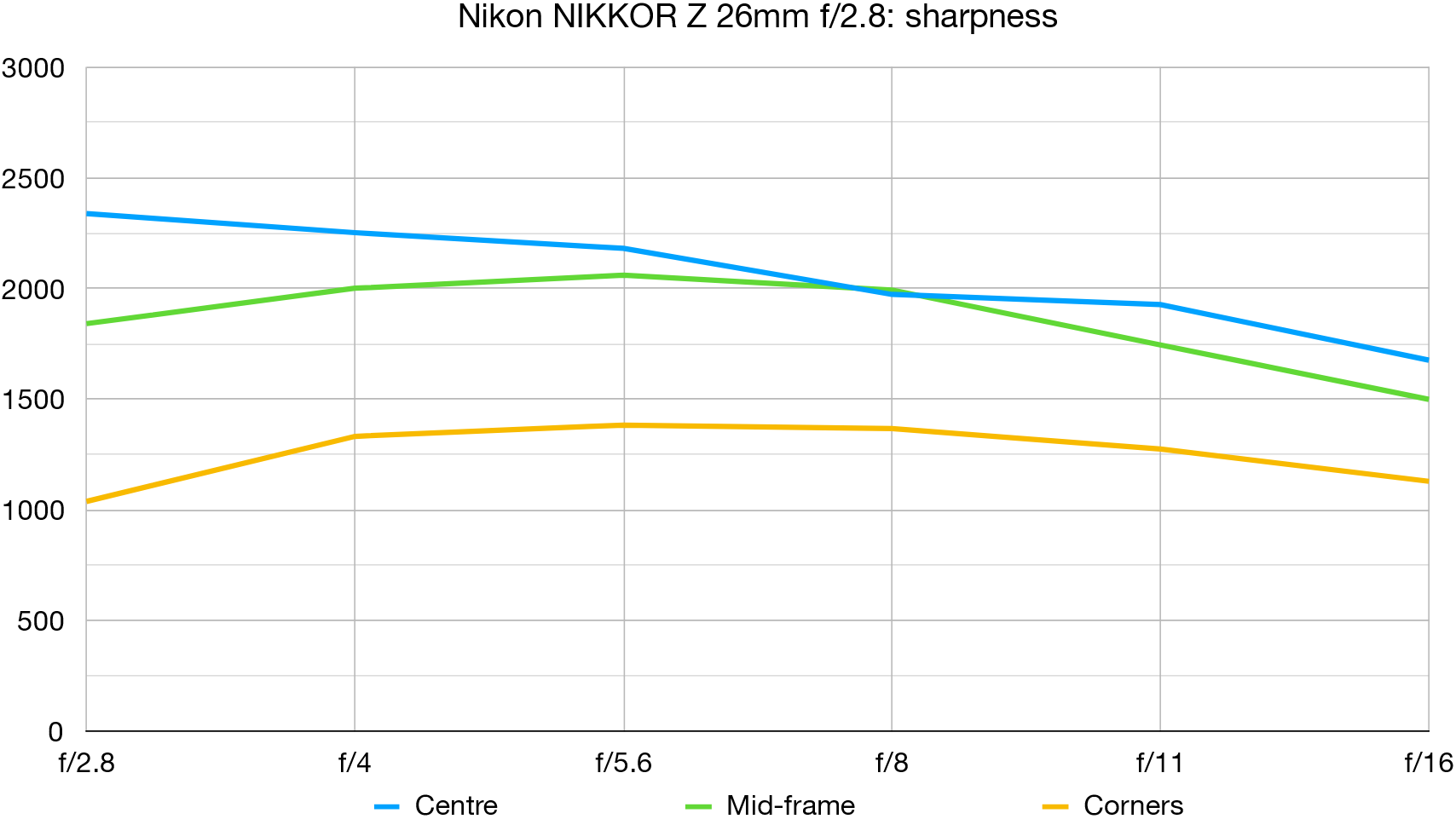
Sharpness is very good indeed, across the whole image frame, although extreme edge-sharpness drops off a little when shooting wide-open at f/2.8, which is to be expected. Our lab-test results for sharpness were extremely similar to those of the Nikon Z 28mm f/2.8 lens, although that one is much less expensive to buy.
Fringing:
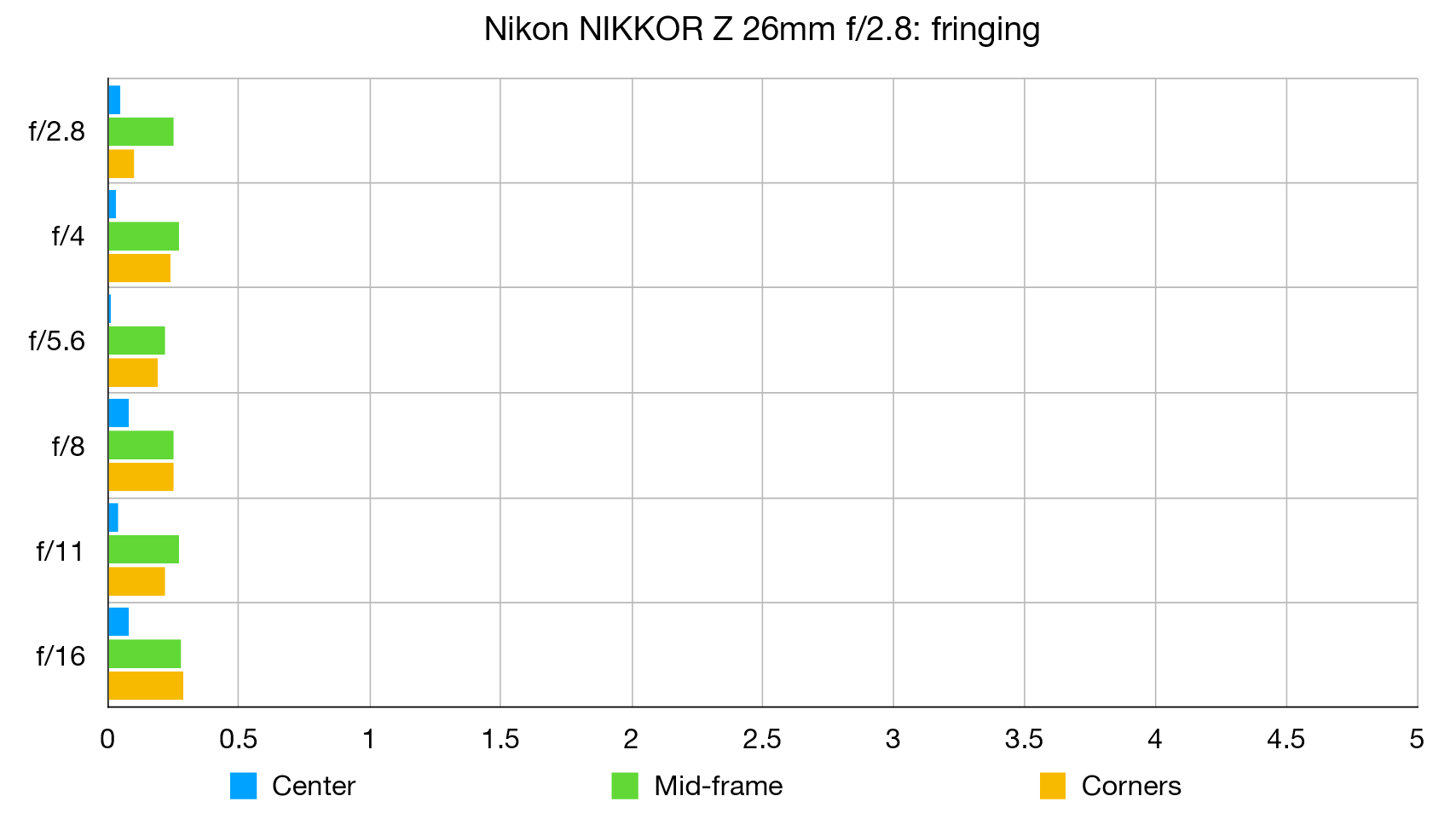
This lens beats the more inexpensive Nikon Z 28mm f/2.8 for control over color fringing. It’s quite minimal in the 28mm lens but absolutely negligible in the Z 26mm, even at the extreme edges of the frame.
Distortion: -0.2
In practice, the lens acts pretty much as a zero-distortion lens with almost imperceptible barrel distortion, although that’s thanks to automatic in-camera correction which can’t be disabled in the shooting menu.
Verdict
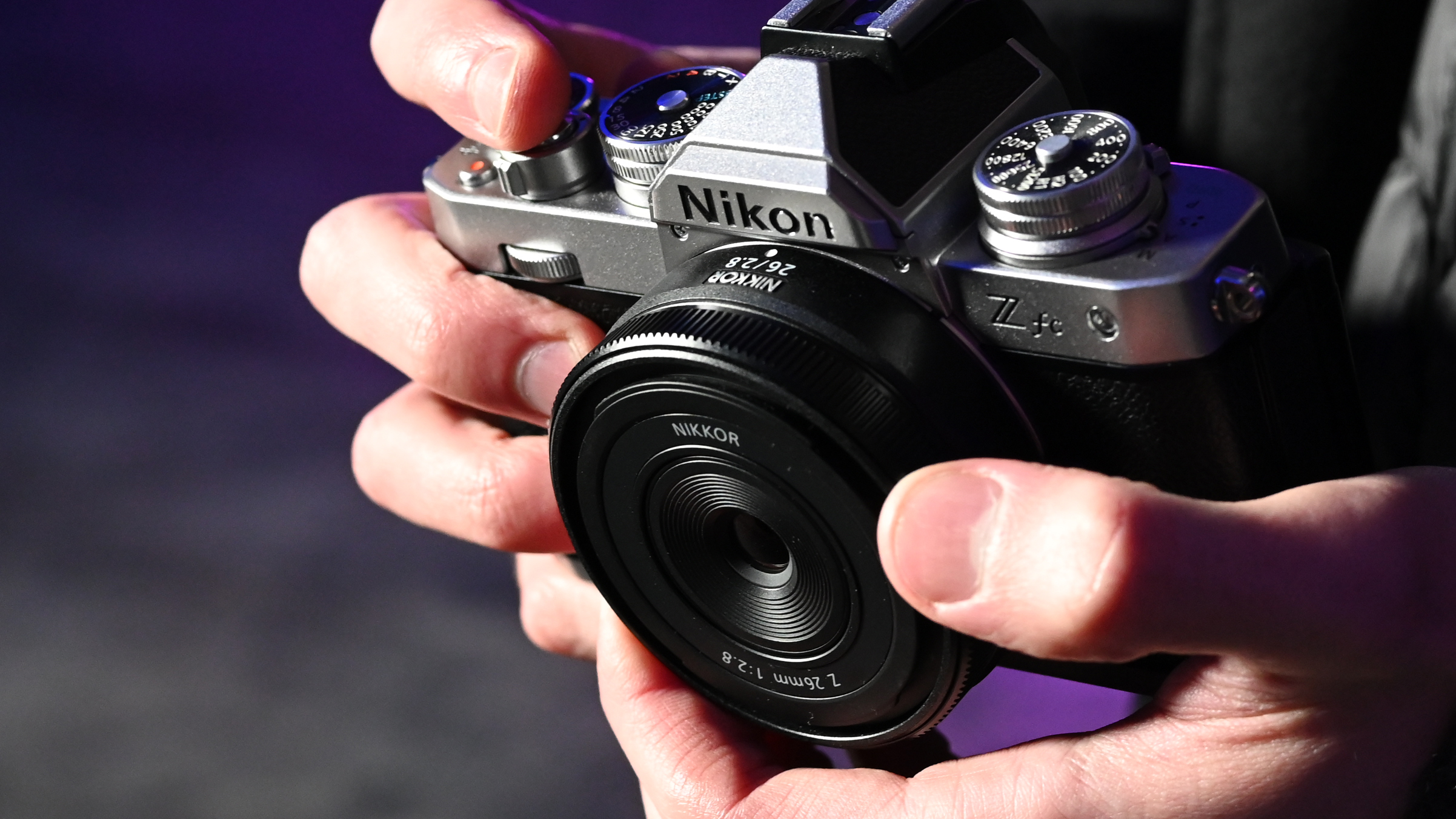
Less than an inch thick, this is Nikon’s slimmest Z system lens to date. It gives a generous viewing angle on full-frame cameras and a very natural ‘effective’ 39mm focal length on DX (APS-C) bodies like the Z 50 and Z fc. Build quality is good and despite weighing just 125g, the lens has a metal mounting plate and weather-seals. It’s ideal for candid street photography and is very travel-friendly, while punching well above its weight for image quality. However, autofocus could be quicker and quieter and it’s much pricier than previous compact lenses in Nikon’s Z line-up, at about $115/£120 per ounce.
If you want to find out more about Nikon then you can see our guide to the best Nikon Z lenses, the best Nikon cameras, and the best wide-angle lenses.







